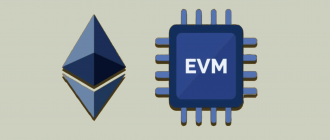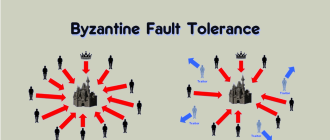Blockchain technology, first introduced as the technological backbone of Bitcoin, is a decentralized database that supports a chain of transaction blocks. At the heart of blockchain is the consensus mechanism, which allows different network participants to agree on the current state of the distributed ledger without needing a centralized intermediary. This mechanism is crucial for maintaining the integrity and security of data within the blockchain and includes mining processes that are essential for the security and continuous operation of blockchain networks.

What is a Blockchain Consensus Mechanism?
A blockchain consensus mechanism is a process that ensures agreement among the network’s nodes about which data or blocks should be added to the blockchain. This process is critical for maintaining the integrity and security of the data in the blockchain. It involves mining mechanisms that allow network participants to perform complex computational tasks to add new blocks. Mining supports the decentralized structure of the blockchain, enhancing its security and resistance to manipulation, and plays a key role in the consensus mechanism by maintaining the consistency and reliability of the entire network.
Why is a Consensus Mechanism Necessary in Blockchain?
The consensus mechanism in blockchain serves a critically important function by ensuring consistency and reliability in decentralized networks. In an environment where participants may not necessarily trust each other and where no central regulatory authority is required, consensus guarantees that each transaction is authentic and that all copies of the distributed database are synchronized.
Problems Addressed by Consensus Mechanisms:
- Prevention of Double Spending: In blockchain, each coin or token can be spent only once. The consensus mechanism checks that the funds have not been previously spent by other transactions, thus ensuring the integrity of financial operations.
- Data Consistency: A fundamental aspect of blockchain is the assurance that every network node maintains an up-to-date and consistent version of all transactions. The consensus mechanism ensures that new blocks added to the blockchain are approved by the majority of nodes, preventing falsification and errors.
- Network Security: Consensus plays a vital role in securing the blockchain network, preventing attacks such as the 51% attack, where an attacker controlling a significant portion of the network’s power can alter blocks. The stringent rules of the consensus mechanism make such actions difficult.
- Scalability and Change Management: As blockchain networks grow and evolve, the consensus mechanism must support the ability to scale the network and manage any changes in its protocol. This ensures the network’s flexibility and its ability to adapt to new requirements and conditions without disruptions in operation.
The consensus mechanism is thus the foundation for stable and secure operation of blockchain networks, enabling them to function efficiently and reliably in the long term.
Key Blockchain Consensus Mechanisms
Consensus mechanisms are crucial for maintaining the integrity, security of data in the blockchain, and supporting its decentralized structure, making the system resistant to manipulation and secure. Mining plays a pivotal role in the consensus process, ensuring consistency and reliability across the entire network. Let’s explore the most common types of mining:
Proof of Work (PoW)
Description: Proof of Work (PoW) is a consensus algorithm that requires network participants to perform complex computational tasks to validate new blocks and add them to the blockchain. This process is designed to prevent spam attacks and fraudulent actions, as the substantial computational effort required to solve cryptographic challenges makes misuse too costly.
Example Project: Bitcoin is the most famous example of PoW usage. In Bitcoin, miners compete to solve a cryptographic problem that requires extensive computational resources. The first miner to solve the problem earns the right to add a new block to the blockchain and is rewarded with new bitcoins, encouraging participation and network maintenance.
Proof of Stake (PoS)
Description: Proof of Stake (PoS) is an alternative consensus algorithm that eliminates the need for energy-intensive mining seen in Proof of Work. Instead of performing computational tasks, network participants, or validators, hold a certain amount of coins in their accounts to earn the right to add new blocks to the blockchain. The more coins a participant holds, the higher their chance of being chosen to create a block. This method not only reduces energy consumption but also enhances network security by encouraging coin owners to invest long-term.
Example Project: Ethereum’s transition from PoW to PoS was motivated by a desire to reduce the network’s energy load and improve scalability. Participants wanting to become validators must lock up a specific amount of Ether, ensuring their commitment to maintaining correct network operations.
Delegated Proof of Stake (DPoS)
Description: Delegated Proof of Stake (DPoS) is an evolution of the standard Proof of Stake mechanism that adds an additional layer of democracy and efficiency. In DPoS, network participants not only freeze their coins to participate in block validation but also vote for delegates (or validators) who will be responsible for creating new blocks and maintaining the network. This approach reduces the number of nodes required to maintain consensus, thereby speeding up transaction processing and enhancing network scalability.
Example Project: EOS is an example of a blockchain platform using DPoS. In EOS, delegates are selected through voting among coin holders, and only these elected validators have the right to add blocks. This not only ensures fast and efficient transaction processing but also motivates delegates to maintain high operational and security standards, as their position and rewards directly depend on participant voting.
Proof of Authority (PoA)
Description: Proof of Authority (PoA) is a consensus algorithm that relies on the reputation of individual validators to maintain network consensus and security. In PoA networks, the right to add new blocks is granted to a limited number of nodes, known as “authoritative validators.” These nodes usually undergo rigorous selection processes and must demonstrate their reliability and honesty to gain such authority.
Example Project: VeChain uses PoA to ensure efficiency and security in business applications, such as supply chain management and product authentication. VeChain selects authoritative nodes responsible for block generation, ensuring fast and reliable data processing.
Byzantine Fault Tolerance (BFT)
Description: Byzantine Fault Tolerance (BFT) enables a system to achieve consensus even if some nodes behave unreliably or maliciously. This technology is critically important for maintaining the stability of blockchain networks where nodes might act incorrectly or attempt to disrupt the system.
Example Project: Hyperledger Fabric employs a variation of BFT known as Practical Byzantine Fault Tolerance (PBFT), which helps ensure a high level of security and reliability in corporate blockchain solutions.
Other Mechanisms
Examples: Proof of Space and Proof of Burn offer alternative ways to achieve consensus, reducing the demands on energy resources or creating scarcity. These innovative mechanisms continue to diversify the ways in which blockchain networks can maintain their integrity and efficiency while adapting to a broader range of applications and environmental concerns.
Cryptocurrency Mining Hardware
Cryptocurrency mining requires specialized equipment that can vary depending on the consensus algorithm and the complexity of the network. Here are the main types of hardware used in mining:
ASIC (Application-Specific Integrated Circuit)

Description: ASICs are microchips designed specifically for performing one particular computing task. In the context of cryptocurrency mining, ASICs are tailored for mining specific cryptocurrencies, such as Bitcoin. These devices are extremely efficient in terms of computational power and energy consumption, providing maximum performance for a particular mining algorithm.
GPU (Graphics Processing Unit)
Description: Graphics processors, or GPUs, are versatile mining hardware capable of handling a broad range of cryptocurrency algorithms. GPUs are less specialized compared to ASICs, making them suitable for mining various cryptocurrencies, especially those that are resistant to ASIC mining.
FPGA (Field-Programmable Gate Array)
Description: FPGAs are integrated circuits that can be configured after manufacturing to perform specific tasks, such as cryptocurrency mining. FPGAs offer higher efficiency than GPUs and can be reprogrammed to adapt to new algorithms or changes in existing mining algorithms.
CPU (Central Processing Unit)
Description: CPUs, or processors, are the most basic type of mining hardware, which was popular in the early days of cryptocurrency mining. Although modern algorithms and increased network complexity make CPUs inefficient for most types of mining, they can still be used for coins specifically designed for CPU mining to make mining more accessible and democratic.
HDD/SSD Mining
Description: Hard drive mining utilizes available disk space for mining cryptocurrencies based on algorithms that require storing large amounts of data instead of performing complex computations. An example of this approach is Proof of Space or Proof of Capacity, where participants use their disk space to store parts of cryptographic solutions.
The Impact of Mining on Network Security
Mining plays a vital role in maintaining the security and stability of blockchain networks. It not only helps verify and confirm transactions but also protects the network from various types of attacks.
Protection Against External Attacks
Mining makes the network resilient to attacks by decentralizing the validation process. In systems like Bitcoin, which use the Proof of Work mechanism, hacking the network or altering blockchain data becomes economically impractical or virtually impossible due to the need to control a significant part of the network’s mining power.
Reduction of Centralization Risk
In blockchains using mechanisms such as Proof of Stake or Delegated Proof of Stake, mining (or staking) contributes to distributing power among a broader range of participants. This reduces the risk of power centralization in the hands of a small group, enhancing the overall security of the network.
Increased Resistance to “51% Attacks”
Mining, especially in large and widely distributed networks, increases the difficulty of carrying out “51% attacks,” where one participant or a group of participants tries to control the majority of the hashing power. Distributing mining power among a large number of independent miners helps ensure democratic and secure transaction processing.
Ensuring Network Continuity
Mining is also crucial for ensuring the continuity of network operations. Regular addition of blocks through mining maintains activity in the network, reassuring participants of its reliability and functionality.
Conclusion
Consensus mechanisms and associated mining are integral components of blockchain technology, ensuring its reliability, security, and scalability. Their continuous development and optimization will play a key role in the evolution of blockchain networks and their expanding application in various sectors of life. Mining remains a critical component for securing blockchain networks, protecting them from manipulation, and facilitating their stable and efficient operation.







